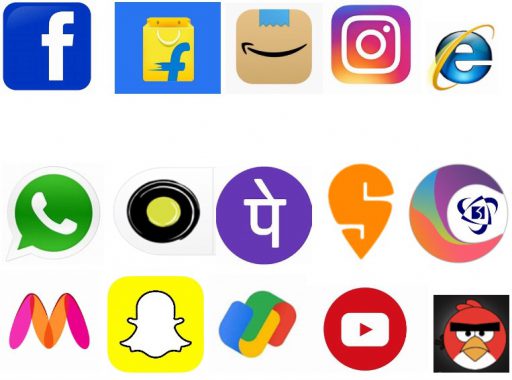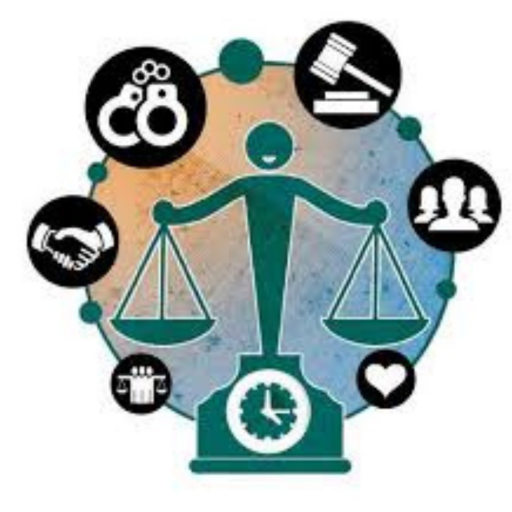

KLE November Activity – Digital Safety:ACTiZEN
EXPECTED OBJECTIVES
- Students will be able to recognize the importance of digital safety and security.
- Students will be able to comprehend and spread awareness about practices to ensure digital safety as ACTiZEN.
EXPECTED OUTCOMES
- Students will describe the practices to ensure digital safety and spread awareness about it.
SKILLS AND VALUES
- Skills - Active listening, and logical thinking.
- Values: Respect
SESSIONS’ OVERVIEW
| S. No. | Session Details | Estimated Time Required |
| 1 | Step 1: Introduction
Step 2: Activity Step 3: Debrief |
45 Minutes |
MATERIAL REQUIRED
Logos for game, Pen, and Notebook
STEPS OF THE ACTIVITY
Session 1: For a 45 min session Step 1-3
Step 1 - Introduction
Time: 10-12 minutes
1. Tell the students we will play a game about identifying the Logo.
Note: Teacher can display the logo chart given in Annexure 1 on phone/ take print out/show online as per the resources available.
2. Give 2-3 minutes time to students to look at all logos displayed and identify the logos.
3. After 2-3 minutes close the logo chart or put off the chart from wall/board/Display
4. Ask students to make a list of logos they identified on the chart and name them in their notebooks. Give them 5 minutes to recall and note the list.
5. Ask students the following questions:
- a) How many of you have identified all the logos?
- b) How many logos are familiar to you?
- c) Have you used these apps ever? Yes/No and for what purpose?
6. Display the answer key after the activity and share the information with them.
Note: Logo chart (Annexure 1) and Answer key (Annexure 2) are given in Annexures for reference.
Step 2 – Activity
Time estimated: 30 minutes.
1. Start the next discussion on data safety and security with the help of following case –
Reema is very active on social media though she is 14 years now, but she has an account on all social media apps like Facebook, Instagram, snap chat etc. She loves to post each update on social media like what she ate today, place she visited recently with friends, being alone at home, night out party at friends’ place, what she purchased recently etc. She loves to get likes and comments from friends, even from strangers. Slowly, she became addicted of using these apps whole day and her parents are not aware about that. Most of the time she uses her parent’s phone and rather than studying she spends time on such apps.
2. Ask questions to class after reading this case study as given below –
- a) What wrong happened here?
- b) Is using social media a bad thing? Yes/No and why?
- c) What data is required to create profiles in these social media apps?
- d) What can happen if we share too much information on social media?
- e) What could happen with Reema in the above case study? How can we protect Reema in the above situation?
- f) What are some of the steps we can take to stay safe online?
3. Sum up the session with informing students about basic safety rules while using social media apps –
- i) Use a strong password whenever you create your profile in any social media account and keep it secret. The longer it is, the more secure it will be, change your passwords frequently.
- ii) Use a different password for each of your social media accounts.
- iii) Set up your security answers. This option is available for most social media sites.
- iv) If you have social media apps on your phone, be sure to password protect your device and don’t let anyone to open and misuse the same.
- v) Be selective with friend requests. If you don’t know the person, don’t accept their request. It could be a fake account which is harmful.
- vi) Click links with caution. Social media accounts are regularly hacked. Look out for language or content that does not sound like something your friend would post. Inform your parents about such links before opening it.
- vii) Be careful about what you share. Don’t reveal sensitive personal information i.e. home address, financial information, phone number, family information etc. The more you post the easier it is to have your identity stolen.
- viii) Become familiar with the privacy policies of the social media channels you use and customize your privacy settings to control who sees what.
- ix) Protect your computer by installing antivirus software to safeguard. Also ensure that your browser, operating system, and software are kept up to date.
- x) Remember to log off when you’re done.
Note: Teacher can try to involve students to share as many points as possible they know and then sum up the remaining points.
Step 3 – Debrief
Time: 5-8 mins
Ask students the following questions to debrief the activity:
- What did we learn from this activity?
- What awareness messages will you spread to others to stay safe online?
Reflection Sheets, Activity Report & Feedback Form
Teachers kindly fill in the feedback form, remind office bearers to fill activity report and remind students also to fill up the reflection sheets.
REFLECTION SHEET (TO BE FILLED BY STUDENTS)
REFERENCE SECTION
ANNEXURE 1 - LOGO CHART
Note: Tell the students about the update in Twitter symbol and name to X.




ANNEXURE 2 : LOGO CHART – ANSWER KEY
| S.No. | Name of App | Type/purpose of App |
| 1. | Social media | |
| 2. | Amazon | Online shopping |
| 3. | Social media | |
| 4. | Flipkart | Online shopping |
| 5. | Messenger | |
| 6. | Ola | Travel booking |
| 7. | Phone pe | Online payments |
| 8. | Swiggy | Online food order |
| 9. | IRCTC | Train ticket booking |
| 10. | Myntra | Online shopping |
| 11. | Snap chat | Social media |
| 12. | G pay | Online payments |
| 13. | Youtube | For watching videos, movies |
| 14. | Angry Bird | Game |
| 15. | Candy crush | Game |
| 16. | Zoom | Virtual meeting |
| 17. | Gmail | Sending and receiving emails |
| 18. | Netflix | For watching web series, movies, songs etc. |
| 19. | Social Media | |
| 20. | Internet Explorer | Online Browser |



